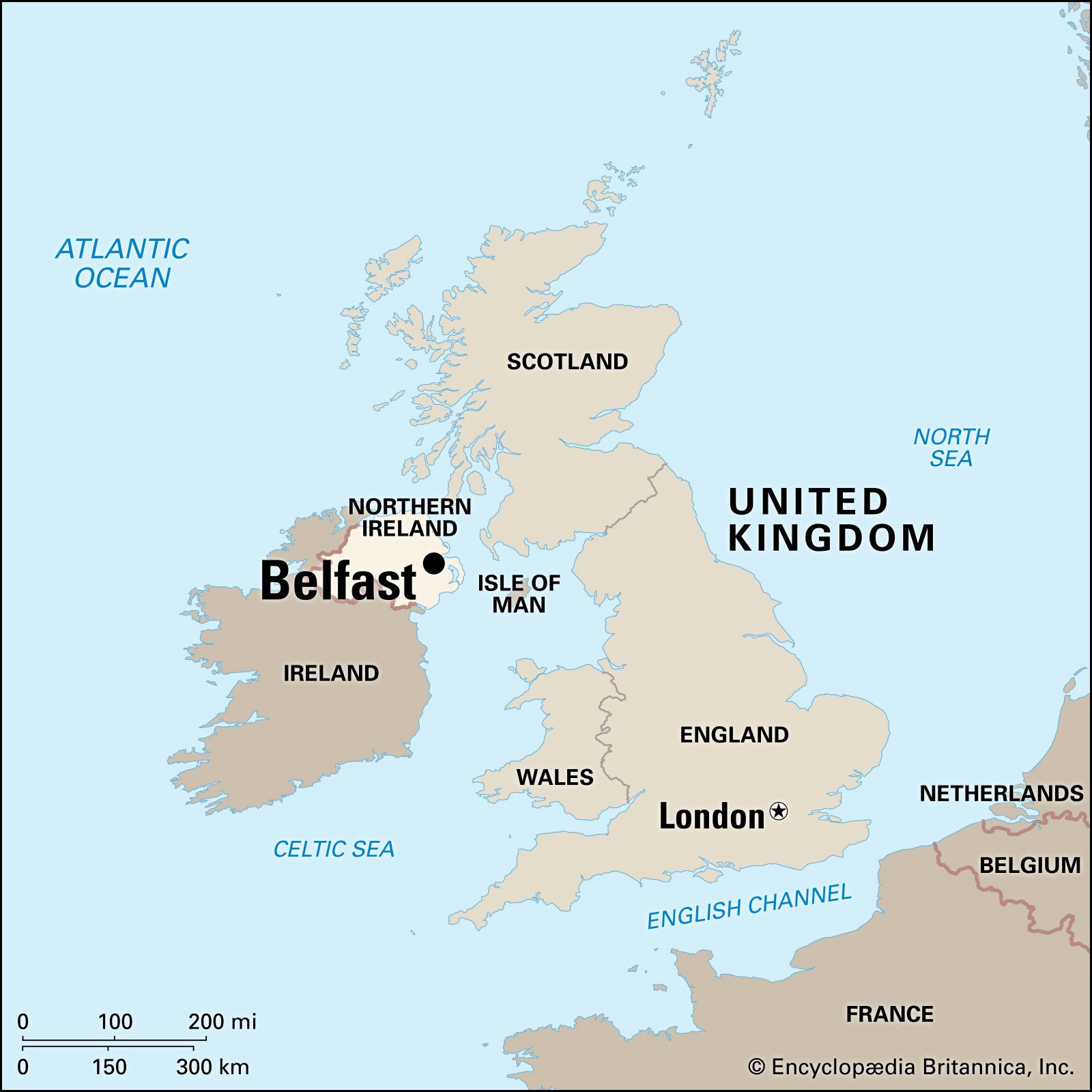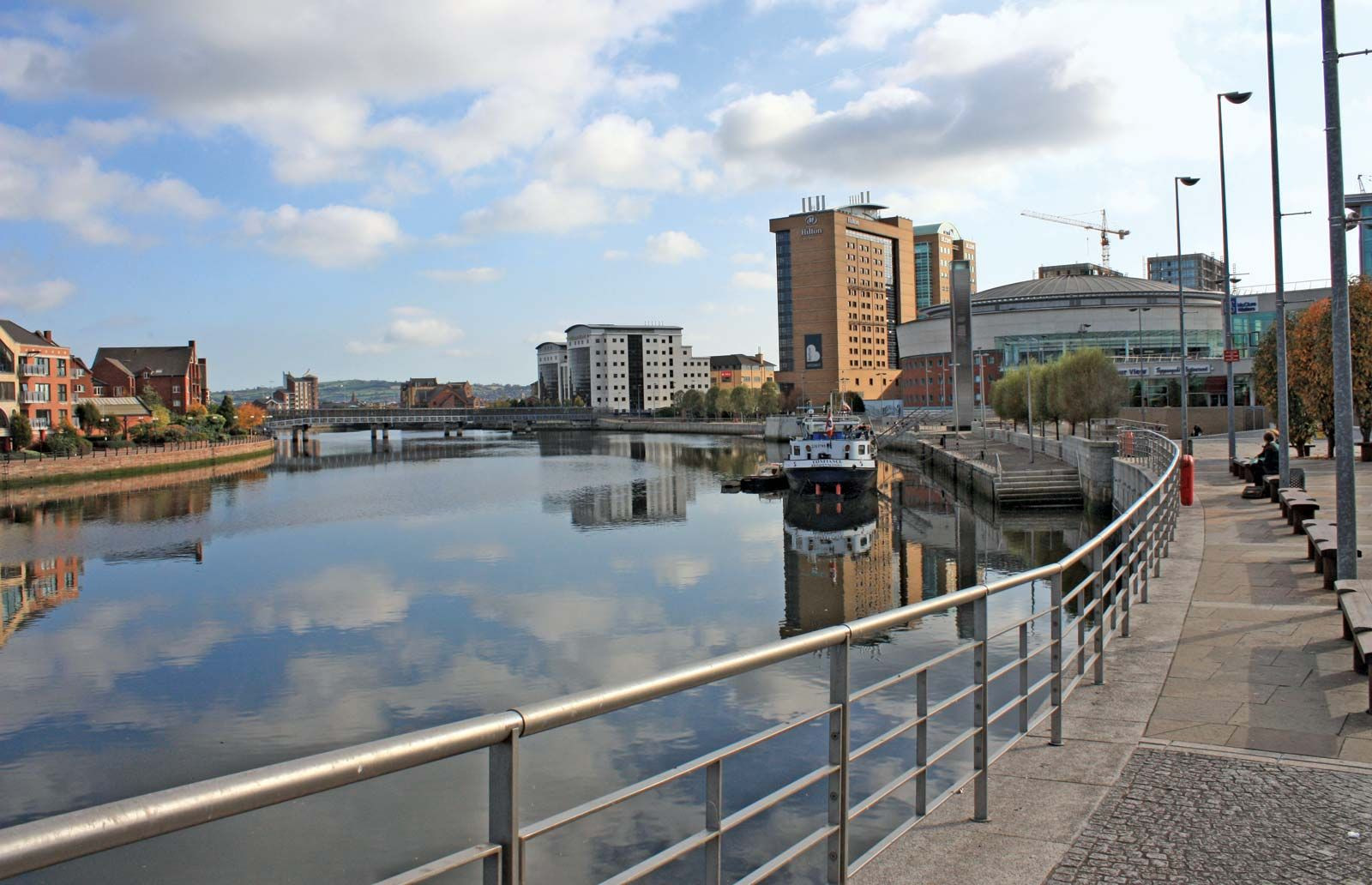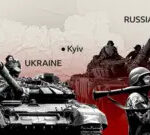Belfast, a city steeped in history and brimming with modern vibrancy, serves as the capital of Northern Ireland. But Where Is Belfast Located exactly? Nestled on the eastern coast of Northern Ireland, this dynamic city sits astride the River Lagan, right where the river flows into Belfast Lough, an inlet of the sea. This strategic location has been pivotal in shaping Belfast’s identity and development throughout centuries.
 Aerial view of Belfast, the capital city of Northern Ireland, showcasing its urban landscape and surrounding greenery.
Aerial view of Belfast, the capital city of Northern Ireland, showcasing its urban landscape and surrounding greenery.
Geographically, Belfast is positioned within the district of Belfast, encompassing an area of approximately 44 square miles (115 square km). Its location in Northern Ireland places it within the United Kingdom, yet it’s also geographically close to the Republic of Ireland. This unique position at the mouth of the River Lagan, opening into Belfast Lough, has made it a significant port city and a natural gateway for trade and travel.
 The River Lagan gracefully flows through Belfast, a vital waterway that has shaped the city's development and maritime heritage.
The River Lagan gracefully flows through Belfast, a vital waterway that has shaped the city's development and maritime heritage.
The site of Belfast has been inhabited for millennia, with evidence of settlements dating back to the Stone and Bronze Ages. Its strategic location was further recognized in the Iron Age, marked by the construction of forts on the hills surrounding what is now the city center. Historically, a castle was established around 1177 by John de Courci, a Norman conqueror, highlighting the area’s importance even in medieval times. The name “Belfast” itself originates from the Gaelic Béal Feirste, meaning “Mouth of the Sandbank” or “Crossing of the River,” aptly describing its riverside location.
Belfast’s modern development began in the early 17th century when Baron Arthur Chichester constructed a new castle and fostered the town’s growth. Its port location facilitated trade, initially in goods like brick, rope, and sailcloth. By the late 18th century, Belfast’s economic importance surged, particularly as the center of the Ulster linen industry, boosted by Huguenot refugees and royal patronage. While attempts at cotton production were fleeting, the mechanization of linen production transformed Belfast into a global linen hub.
 Historic shipyard in Belfast where the Olympic and Titanic were constructed, highlighting the city's shipbuilding legacy.
Historic shipyard in Belfast where the Olympic and Titanic were constructed, highlighting the city's shipbuilding legacy.
Furthermore, Belfast’s riverside location naturally fostered shipbuilding. Established in the late 18th century, shipbuilding became a cornerstone of Belfast’s economy, most famously with Harland and Wolff, the builders of the Titanic. The city’s port continued to be vital, even through challenges like the air raids of World War II, and the later economic shifts away from traditional industries.
Today, Belfast remains the undisputed center for shopping, retail, education, commerce, entertainment, and services in Northern Ireland. Its location makes it a transport hub, with ferry links to major UK ports like Liverpool and Stranraer, and its own international airport. Culturally rich, Belfast boasts attractions like the Grand Opera House, Ulster Museum, and Titanic Belfast, drawing tourists keen to explore its unique heritage and vibrant contemporary scene. The city’s Stormont suburb is also home to Northern Ireland’s government, solidifying Belfast’s role as the political heart of the region.
In conclusion, Belfast’s location on the River Lagan, where it meets Belfast Lough, is fundamental to its identity and success. This coastal position in Northern Ireland has shaped its history, economy, and culture, transforming it into the dynamic capital city it is today. From its ancient origins to its modern role as a thriving European city, Belfast’s geographical setting continues to be a defining aspect of its character.


